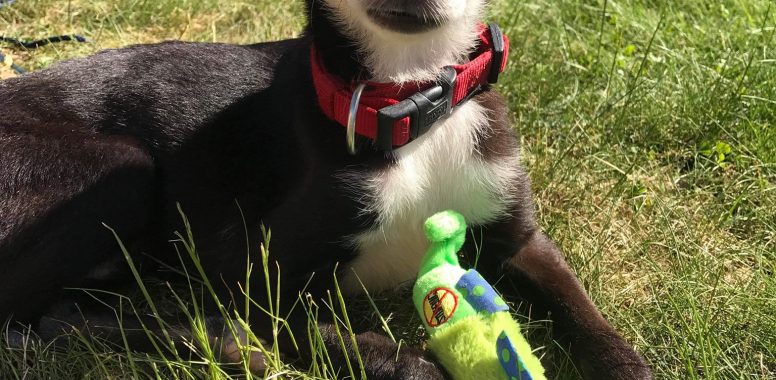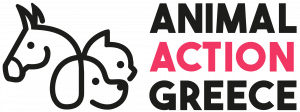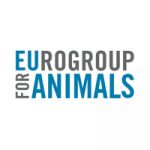Stray Animals Sterilisation Protocols

Μ. Vorrisis – Veterinarian December 2017
Manolis Vorissis is a graduate of the Veterinary School of the Aristotle University of Thessaloniki. He has worked as a Small Animal Surgeon at the Royal Veterinary Clinic in London and at Dog’s Trust. He lives permanently in Ermoupolis, Syros, where he works as a Scientific Associate at the Veterinary Clinic of the Cyclades. He is also the initiator of the “Aegean Cats Watchers” project, which aims to sterilise and care for the stray cats of Ermoupolis, to create a fostering network for homeless cats until they are adopted, to promote adoptions and to create “Cat Cafes & Gardens” in Ermoupolis. These are public spaces where packs of stray cats live in and who, with the help of people living by, he cleans, plants, grooms and places feeders and water bowls for the cats. The responsibility for the maintenance of the area and the feeding/watering of the animals is undertaken by the neighbors, while the veterinary responsibility and the provision of food are undertaken by the vet himself.
FORMALLY ADOPTED:
Date of Board OF Trustees meeting: 12 December 2018
Dog neutering/spaying protocol
Preanesthetic
A 12hour fast and clinical examination are performed before operating. Malnourished animals, animals in season/heat (unless the surgeon does not object and after agreeing with the caretakers of the animal on the operational risk), animals suspect of suffering from chronic conditions such as Leishmaniasis), are excluded.
The present protocol concerns performing a neutering/spaying operation to healthy dogs.
In each dog an intravenous catheter is placed to administer isotonic serum during anesthesia in 10mg doses.
Medicines of choice are xylazine or medetomidine which are administered intramuscularly or intravenously. The usual side effect of xylazine is vomiting.
Xylazine 0,6 mg/kg intravenously or intramuscularly (when administered intramuscularly 20 minutes waiting is required for the pre-anesthetic to peak effect).
or
Medetomidine 10-40 μg/kg intramuscularly or intravenously (when administered intramuscularly 20 minutes waiting is required for the pre-anesthetic to peak effect).
Induction – Maintenance of anesthesia
Medicines of choice for inducing anesthesia are thiopentone or propofol.
Thiopentone (usually a solution of 25mg/ml) is administered to effect with a dose of 5mg/kg being adequate for the patient’s intubation.
or
Propofol (usually a solution of 10mg/ml) is administered to effect with a dose of 4mg/kg being adequate for the patient’s intubation.
The patient is intubated and anesthesia is maintained with a mixture of O2 and anesthetic gas, commonly isoflurane.
The anesthetic machine, the capacity of oxygen in the tube, the adequacy of anesthetic gas for the whole length of the operation and the integrity of the tracheal tube are all monitored before every operation.
Analgesia
With the induction to anesthesia, a dose of 0.2 mg/kg of meloxicam is administered intravenously or subcutaneously.
Preparing the surgical site Male
It is trimmed and the area that includes the scrotum, the inner thighs in proximity to the scrotum and the lower abdomen as far as the foreskin, are prepared surgically.
Female
It is trimmed and the abdomen area from the xiphoid process, the costal arch on both sides as far as
the vulva, are prepared surgically.
Performing the operation Male
The operation of choice is open bilateral orchiectomy with double ligation of the spermatic cord in every testicle. In dogs <10 kg we can perform closed orchiectomy with double ligation as well.
Sutures recommended are the Vicryl type but this may differ according to the veterinarian’s preference. The subcutaneous tissue is sutured with continuous closure and the skin with subcutaneous closure.
Female
Operation of choice is ovariohysterectomy performed with laparotomy from the midline. Double ligation is applied to the arteriovenous complex of the ovaries and the body of the uterus. In addition and according to the veterinarian’s judgment the vessels of the broad ligament or the Vastus are wholly or partly ligated.
In dogs >15 kg it is recommended that the one ligation in the uterus body to be complete.
Sutures recommended are the Vicryl type but this may differ according to the veterinarian’s preference. Prior to closing the laparotomy it is required to find possible stumps and check them for hemorrhage.
The subcutaneous tissue is sutured with continuous closure and the skin with subcutaneous closure.
Recovery
Recovery takes place in a quiet area/kennel.
Release
The animals may be released on the following day provided that they have fully recovered their strength and do not suffer any pain.
Cat neutering/spaying protocol
If possible each animal should be clinically examined.
In case of feral behavior of an aggressive stray cat that is impossible to be examined, it should be given the opportunity to calm down in a kennel and its breathing to be monitored in relaxation. This is required because it is not uncommon for some cats to suffer from diaphragmatic hernia (caused by an accident at a young age which the cat survived) and the anesthetic protocol should differ from the basic anesthetic protocol or even postpone/cancel the operation.
The basic anesthetic protocol is the same both for castration or ovariohysterectomy. In case that intubation and inhaled anesthesia are not possible (common in mass sterilisation programs in rural areas or in non-veterinarian but licensed areas for mass sterilisation), the basic anesthetic protocol is applied to the operated animals by experienced veterinarians given that the anesthesia is in effect for 20-30 minutes.
Preanesthetic
The doses of pre-anesthetics and ketamin are ranging. The exact dose is determined by the general condition of the animal and its stress levels. Hereunder the ranges and the medications used by the writer are presented. In case that inhaled anesthesia is not available, it is recommended to administer higher dosages than the ones recommended, always within safety dosage ranges.
The protocols hereunder concern animals aged at least 5 months. For early neutering/spaying (4 months), the Quad Kitten protocol is recommended (see hereunder) according to medicines available.
Xylazine dosage range 1-3 mg/kg recommended 1.25 mg/kg intramuscularly and 20 minutes waiting before administering ketamin. Usually vomiting is observed after the administration.
Typical concentration of xylazine in a bottle of 20mg/ml based on which the hereunder tables are determined. Always check the concentration of the bottle used.
Dosage
| Cat body weight | Xylazine dosage in ml (1.25mg/kg – 20 mg/ml bottle), intramuscular administration |
| 1.5 | 0.1 |
| 2 | 0.12 |
| 2.5 | 0.15 |
| 3 | 0.18 |
| 3.5 | 0.21 |
| 4 | 0.25 |
| 4.5 | 0.28 |
| 5 | 0.31 |
| 5.5 | 0.34 |
or
Medetomidine dosage 0.05-0.1 mg/kg recommended 0.075 mg/kg intramuscularly and 20 minutes waiting before administering ketamin.
Typical concentration of xylazine in a bottle of 1 mg/ml based on which the hereunder tables are determined. Always check the concentration of the bottle used.
Dosage
| Cat body weight | Xylazine dosage in ml (0.75 mg/kg – 1 mg/ml bottle), intramuscular administration |
| 1.5 | 0.08 |
| 2 | 0.15 |
| 2.5 | 0.18 |
| 3 | 0.22 |
| 3.5 | 0.26 |
| 4 | 0.3 |
| 4.5 | 0.33 |
| 5 | 0.37 |
| 5.5 | 0.4 |
Analgesia
Along with pre-anesthetics, a dose of 0.1 mg/kg of meloxicam is administered subcutaneously.
Induction – Maintenance of anesthesia
The medicine of choice is ketamin administered with intramuscular injection. After an average time of five minutes the patient is moved to the operational table where it is positioned in the operational position preferred by the surgeon (dorsal or right side recumbency). An ocular gel is instilled to the eyes to prevent cornea dryness.
Dosage
15 mg/kg up to 25 mg/kg additionally if the surgical anesthesia is not adequate or it is not possible to administer anesthetic gas (commonly using a mask or intubation).
| Cat body weight | Ketamin dosage in ml (17 mg/kg – 100 mg/ml bottle), intramuscular administration |
| 1.5 | 0.22 |
| 2 | 0.3 |
| 2.5 | 0.38 |
| 3 | 0.45 |
| 3.5 | 0.51 |
| 4 | 0.6 |
| 4.5 | 0.67 |
| 5 | 0.75 |
| 5.5 | 0.8 |
Quad Kitten protocol (for young animals <5 months old)
Medetomidine 600μg/m2 Ketamin 60mg/m2 Buprenorphine 180μg/m2 Midazolam 3mg/m2
All medicines are suctioned and made into the same syringe with an intramuscular injection.
| Body weight | Body surface m2 | Each medicine quantity in the syringe ml |
| 1 | 0.1 | 0.06 |
| 1.5 | 0.14 | 0.08 |
| 2 | 0.17 | 0.1 |
| 2.5 | 0.19 | 0.12 |
The aforementioned concentrations are for bottles of:
Ketamin 100 μg/ml – Medetomidine 1 mg/ml – Buprenorphine 0.3mg/ml Midazolam 5mg/ml
Preparing the surgical site
The surgical site is meticulously prepared. The area is shaved and all hair is removed with an electric vacuum.
The surgical site is sterilized with a solution of surgical antiseptic diluted with water. Rinsing lasts 4 minutes in 1 minute cycles.
Performing the operation Female Cat
Ovariohysterectomy from the midline
The abdominal surface of the body is prepared from the xiphoid process to the entrance of the pelvis and between the nipples. The bladder is identified with palpation and is pressed smoothly and totally in the whole palpable surface in order to empty.
The distance between the umbilicus and up to the entrance of the pelvis is divided to three parts and the incision of the skin and the subcutaneous tissue is performed along 2-2.5 cm (it is justified to proceed more if the surgeon feels more comfortable) to the middle third.
A routine ovariohysterectomy is performed. Usually the ovarian venous plexus is ligated with solitary ligation while in case of gestation and large veins it is recommended to place two ligations. The same is valid for the body of the uterus. Specific attention should be paid to an uterus that is especially vascularized, oedematic and brittle (in case of the animal being in heat) when placing the hemostatic forceps. It is very possible to cut it, consequently forceps should be avoided and double ligation is made at once complete.
The abdominal cavity is checked for hemorrhage and then follows the closure of the surgical trauma with absorbable sutures (polysorb 2/0-3/0). The muscular wall, subcutaneous tissue, skin with subcutaneous suture.
Male Cat
Any recumbency position is acceptable according to the preference of the veterinarian. It is common to use the right side recumbency position for right handed veterinarians.
Routine orchiectomy with scrotum incision above each testicle. The simplest, fastest and with less expenses orchiectomy is the one performed with one knot using the same spermatic cord.
Identification – Marking
Identification is performed by amputating the left ear at an adequate length so that the animal is recognized from afar and under any viewing angle. Usually 1 cm is enough.
Recovery
It takes place in the transport kennel used to bring the animal in or in a nursery kennel at a quiet and dark room to avoid stimulation (it is good to cover the kennel). The patient is checked periodically for cleanliness (they usually urinate during recovery) and for hemorrhage from the marking area.
Release
The animals are released very early in the morning (before morning traffic if they are released in urban areas) on the following day and after giving them the chance, for few minutes, to realize that they have returned to familiar places. We do not open the kennels in a hurry as soon as we unload them from the car. It is important to make sure that they have recovered all their senses.
ENDS





